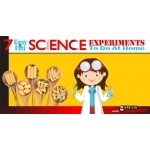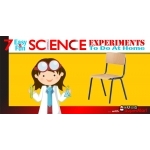Common Primary School Science Misconceptions 6
Your child is taught that only green plants contain chlorophyll, which is the catalyst for photosynthesis to happen. So, green plants can carry out photosynthesis to make food.
So, what about plants with non-green leaves, such as red or orange? The easy answer is that these plants can still carry out photosynthesis as long as there is hidden chlorophyll lying below the green pigment.
But in actual science, it is a lot more complex than that. You can see a green leaf because green light is reflected from the leaf; red and blue are absorbed by the green pigment, chlorophyll. Plants actually contain other pigments that absorb other colours, but these are often masked by chlorophyll. A good example is the other pigment, carotenoids. In autumn, chlorophyll in plants becomes much lesser because there is less sunlight and carotenoids become more prevalent. That explains why you see less or no green leaves but more red and orange ones, but that doesn't change the fact that those red and orange plants are still carrying out photosynthesis. Fascinating, isn't it?
Want to learn something even more mind blowing, so much so that it will even change the entire belief you are interpreting how you see everyday things in their splendid colour?
Picture this… closely. You see a green leaf because green light is reflected from the leaf; red, blue and every other colour are absorbed by the chlorophyll. Now you remember the physics lesson that taught you that a green object absorbs green light?
So, back to our leaf. If it reflects green light, and not absorbs it, isn’t the leaf any colour in the world except green?
Watch this episode of Brain Games to totally change the way you see colours -> Brain Games - In Living Color

Can't wait to get all 20 science misconceptions at one go to revise with your child before her exams? Well, you can get them all neatly consolidated in one PDF Booklet.
The "20 Primary School Science Misconceptions" PDF Booklet contains 29 pages of information to dispel common Science myths that cause many children to make mistakes in their exams.
The other title in the series that you have to get is the "Top 12 Tips for Primary School Science" PDF Booklet. It reveals 12 of the most tried-and-tested Primary School Science tips in 32 colourful pages.
Both titles are available at only $4.99 each.
Get them today so that you can immediate use the tips to revise with your child.
=> http://learnsupermart.zaxaa.com/s/11095991035857
=> http://learnsupermart.zaxaa.com/s/11095921836022
Other Articles That You May Like
-

7 Easy and Fun Science Experiments To Do At Home
Experiment #7 - Forces (Frictional Force)
-

7 Easy and Fun Science Experiments To Do At Home
Experiment #6 - Forces (Frictional Force)
-




.jpg)
.jpg)
%20Pri%20Science.jpg)
